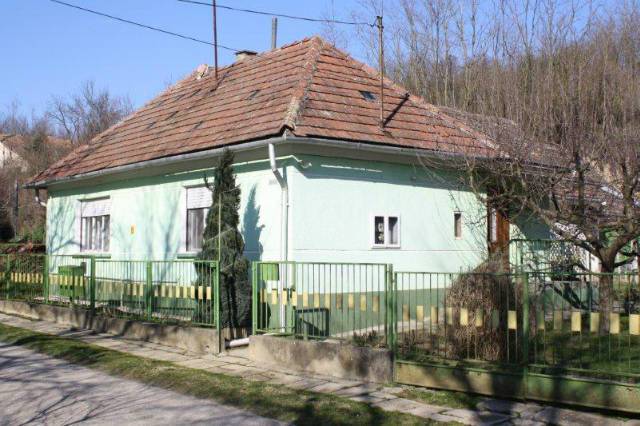What Is A Flash Flood Emergency? Definition, Causes, And Safety Tips

Table of Contents
Defining a Flash Flood Emergency
A flash flood is defined as a rapid and sudden rise in water levels in a typically dry area, often occurring within six hours (or even less) of a heavy rainfall event. This rapid flooding is characterized by its unexpected and overwhelming nature, leaving little time for evacuation and making it significantly more dangerous than a regular flood. A regular flood develops more gradually, allowing for more time to prepare and react. The key difference is the speed and volume of water. A flash flood warning indicates that a flash flood is imminent or occurring. A flash flood emergency is declared when the threat is immediate and life-threatening, requiring immediate action.
- Rapid flooding: Water levels rise incredibly quickly, often within minutes.
- Sudden flooding: The flooding occurs unexpectedly, leaving little time to react.
- Flash flood warning: An official warning issued when a flash flood is imminent or occurring.
- Flash flood emergency: The highest level of warning, indicating an immediate and life-threatening situation.
Causes of Flash Flood Emergencies
Several factors can contribute to flash flood emergencies, often combining to create a devastating situation. Understanding these causes can help you better assess your risk and prepare accordingly.
- Intense and Prolonged Rainfall: This is the most common cause of flash floods. Areas with poor drainage systems are particularly vulnerable, as the ground cannot absorb the excessive rainfall quickly enough.
- Thunderstorms: Intense thunderstorms, particularly those that are slow-moving, can dump enormous amounts of rain in a very short period, overwhelming drainage systems and causing rapid water level rises. These are often associated with heavy downpours and strong winds.
- Dam or Levee Failures: A breach in a dam or levee can release a massive volume of water downstream, leading to a sudden and catastrophic flash flood. This often affects downstream communities with little to no warning.
- Rapid Snowmelt: In mountainous regions, rapid snowmelt due to warmer temperatures can quickly overwhelm rivers and streams, leading to flash flooding in valleys and lowlands.
- Urbanization: Increased urbanization contributes to flash flooding due to the reduction in natural water absorption capacity. Paved surfaces prevent water from seeping into the ground, leading to increased runoff and faster flooding.
Safety Tips During a Flash Flood Emergency
Staying safe during a flash flood emergency requires preparedness and decisive action. Here's what you should do:
- Develop an Evacuation Plan: Know your evacuation routes and designated safe zones in advance. Share this plan with your family and practice it regularly. Identify higher ground areas near your home.
- Prepare an Emergency Kit: Your emergency kit should include essential supplies like bottled water, non-perishable food, a first-aid kit, flashlights, a battery-powered radio, and extra batteries. Include any necessary medications.
- Heed Warnings: Pay close attention to weather alerts and evacuation orders issued by local authorities. These warnings should be taken seriously and acted upon promptly.
- Move to Higher Ground: If caught in a flash flood, immediately move to higher ground. This is the most critical step. Avoid driving through floodwaters.
- Never Drive Through Floodwaters: Even seemingly shallow water can be deceptively powerful and sweep a vehicle away. Turn around, don't drown.
- Stay Informed: Monitor weather reports and official sources for updates throughout the duration of the emergency.
After the Flash Flood Emergency
Following a flash flood, proceed with caution. Floodwaters often contain contaminants and debris, posing health risks.
- Post-flood safety: Avoid floodwaters entirely until they have fully receded and have been declared safe by authorities.
- Flood damage assessment: Carefully assess any flood damage to your property. Report significant damage to your insurance company.
- Flood cleanup: Follow guidelines from local authorities and professionals for safe flood cleanup procedures.
Conclusion
Flash flood emergencies are dangerous events that demand preparedness and swift action. Understanding the definition of a flash flood, its causes, and the crucial safety tips discussed above can significantly improve your chances of surviving this type of disaster. Remember, prevention and preparation are key to mitigating the risks associated with flash floods. Staying informed about the potential for flash floods in your area and developing a comprehensive flash flood emergency plan is crucial. Your safety and the safety of your family depend on it. Don't wait until it's too late; learn more about flash flood preparedness and create your action plan now!

Featured Posts
-
 Prepustanie V Nemecku Analyza Situacie A Jej Dosledkov Pre Zamestnancov
May 25, 2025
Prepustanie V Nemecku Analyza Situacie A Jej Dosledkov Pre Zamestnancov
May 25, 2025 -
 Help Keep Myrtle Beach Clean Volunteer Opportunity
May 25, 2025
Help Keep Myrtle Beach Clean Volunteer Opportunity
May 25, 2025 -
 Mercedes Performance Breakthrough George Russells Strategic Choice
May 25, 2025
Mercedes Performance Breakthrough George Russells Strategic Choice
May 25, 2025 -
 80 Millio Forintert Extrak Ez A Porsche 911
May 25, 2025
80 Millio Forintert Extrak Ez A Porsche 911
May 25, 2025 -
 George Russells Leadership Bringing Calm And Confidence To Mercedes
May 25, 2025
George Russells Leadership Bringing Calm And Confidence To Mercedes
May 25, 2025
Latest Posts
-
 Alcaraz And Sabalenka Triumph In Italian Open Debut
May 25, 2025
Alcaraz And Sabalenka Triumph In Italian Open Debut
May 25, 2025 -
 Can Alex Eala Achieve A Dream French Open Performance
May 25, 2025
Can Alex Eala Achieve A Dream French Open Performance
May 25, 2025 -
 Alex Ealas French Open A Dream Start In Sight
May 25, 2025
Alex Ealas French Open A Dream Start In Sight
May 25, 2025 -
 Alex Eala Targets Strong French Open Debut
May 25, 2025
Alex Eala Targets Strong French Open Debut
May 25, 2025 -
 Swiateks Winning Streak Continues Madrid Open Victory Over Keys De Minaurs Departure
May 25, 2025
Swiateks Winning Streak Continues Madrid Open Victory Over Keys De Minaurs Departure
May 25, 2025
